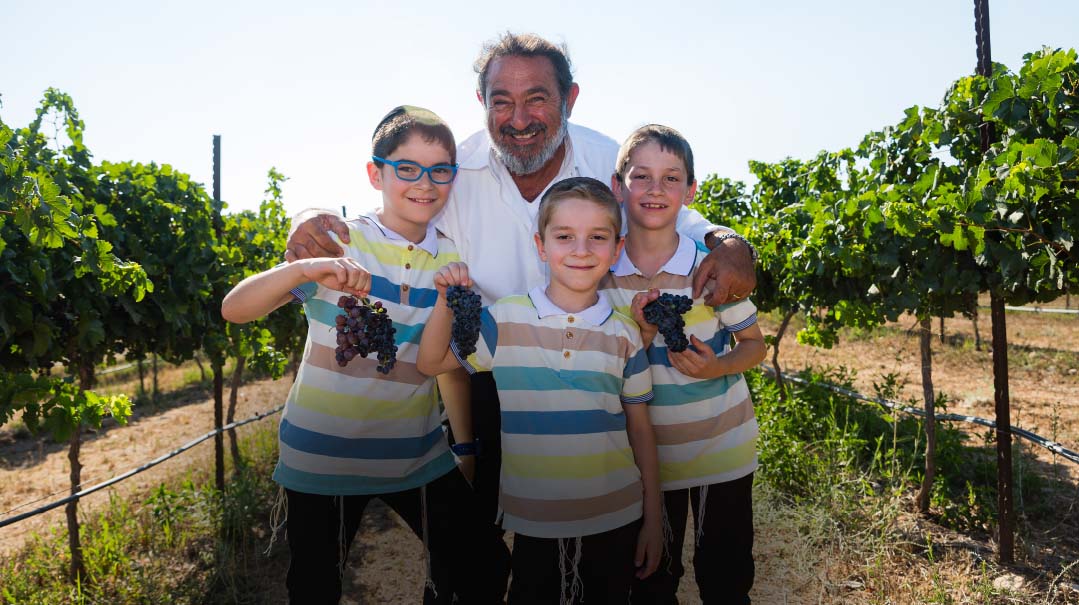Keeping Shemittah in Karmei Elul
| September 14, 2021Join us at Moshe Elul’s beautiful organic grape vineyards to learn what shemittah entails

Photos: Elchanan Kotler
Do you know what’s special about this year? Starting from Rosh Hashanah, all over Eretz Yisrael, the halachos of shemittah take effect.
Rabbi Efraim Lebovits of Keren Hashviis, an organization that helps farmers in Eretz Yirael keep shemittah, took us to Moshe Elul’s beautiful organic grape vineyards in Karmei Yosef to see for ourselves what shemittah entails.
Arriving at Karmei Yosef
Hashem gave us such a beautiful country! Before we even reach the farm, the views are breathtaking, with green and brown hills unrolling under a bright blue sky. Once we pull into Moshe Elul’s vineyard, Karmei Elul (that’s “Elul’s Vineyard” in Hebrew), we see row after row of grapevines as far as the eye can see.
At the entrance to the vineyard is a small orchard of olive trees that Moshe tells us was planted right before the last shemittah. It’s really pretty here. Moshe tells us that with people looking for outdoor venues due to Covid, many events took place here under these olive trees. The trees offer us a welcome escape from the sun, but we’re eager to see the vineyard that we came for.
“What are you allowed to do for shemittah?”
“How many different kinds of grapes do you have here?”
“Do you only make wine, or do people also eat the grapes?”
“Is this the first time you’re keeping shemittah?”
All the children have so many questions. Hashem told us that just like we have Shabbos every seven days, every seventh year is shemittah. It’s a Shabbos for the land. We have to let the land rest. What does it mean to let the land rest?
“The short answer of what can be done with the land during shemittah is — absolutely nothing,” says Moshe, spreading both hands, palms down in front of him. “But the long answer is a little more complicated.”
Oops! We could not locate your form.






